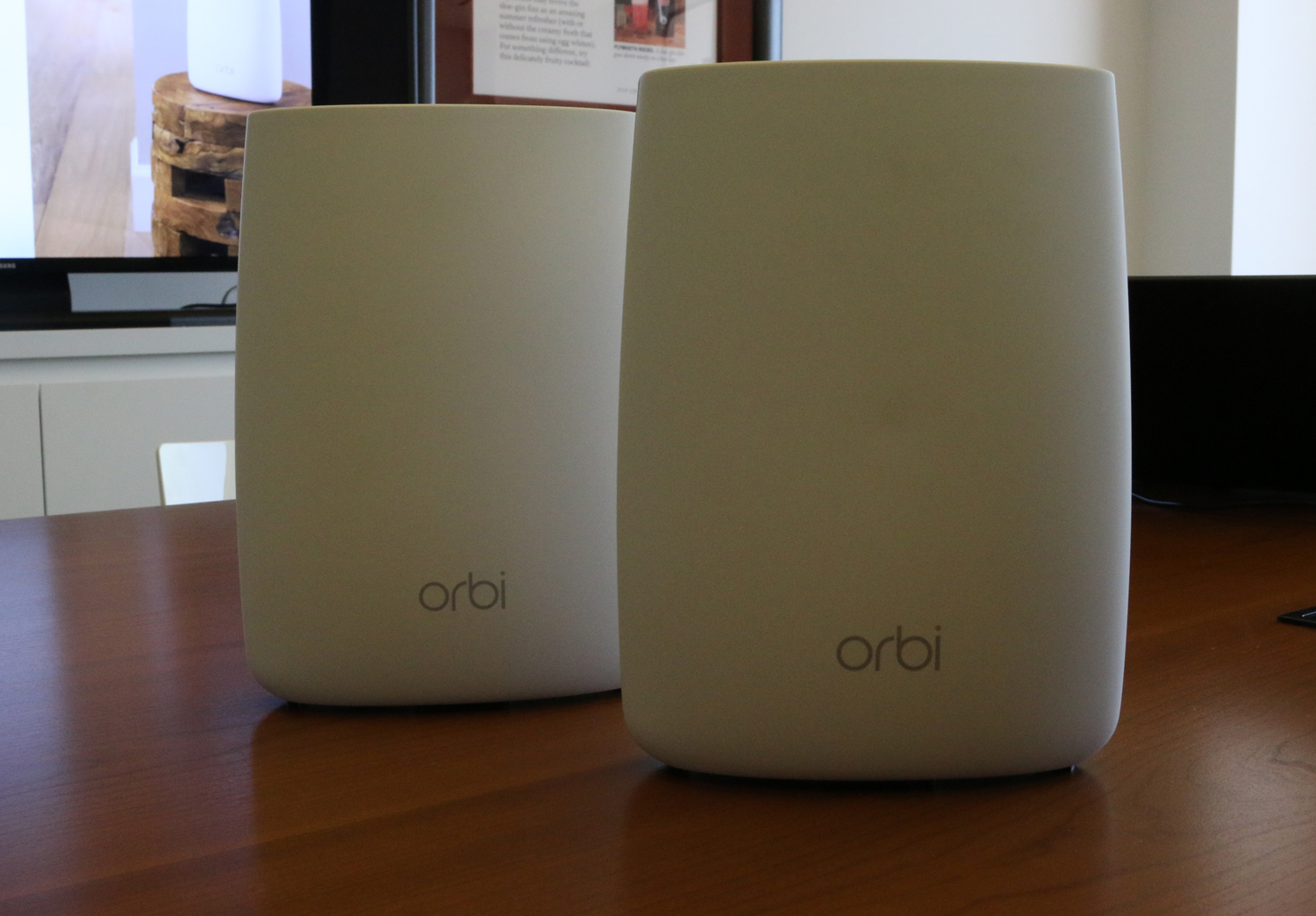Netgear Orbi Spreads Wi-Fi Through Every Inch Of Your Home
Orbi joins the ranks of mesh networking devices that extend your Wi-Fi network to every corner of your home. But the tri-band Orbi does so without a performance hit as you add more devices.
The trendy method for filling up your entire home with wireless signals involves mesh networking, in which a router works with one to two satellite devices to extend your network to every corner of your house. Netgear, which has specialized in traditional routers for two decades, has unveiled a new Wi-Fi system of its own, aimed at beating upstart systems at their own game.

Netgear's new $399.99 Orbi ships in September. Orbi features two devices — a router that you plug into your internet modem and an identical satellite device you setup elsewhere in the house to make sure every room is bathed in Wi-Fi.
That sounds an awful lot like the other mesh networking setups that have debuted in the past year. Eero, Luma and Amplifi all feature multiple devices that promise to extend your Wi-Fi signal to even the hardest-to-reach locations in your home; another product, Plume, will join their ranks this fall.
MORE: Best Router - Get a Better Wi-Fi Signal at Home
Netgear claims that its Orbi offering, while taking a similar approach with a two-device setup, boasts a not-so-secret weapon: it's a tri-band system that not only extends your Wi-Fi network's reach but maintains performance even as you connect more devices.
That's going to become especially critical as we connect more things to our networks. According to BI Intelligence figures cited by Netgear, the average home has 11 devices connected to the Internet right now, with that figure expected to double by 2019. Those devices aren't just consuming data; they're also uploading it to the cloud, putting even more of a performance strain on home wireless networks beyond just how far they can reach.
"You need coverage everywhere, and it needs to be fast," said Netgear product manager Brandon McIntyre.
Netgear figures that the answer to this is a tri-band device. Two-band Wi-Fi extenders are using the same wireless connection to talk to each other as well as deliver data to and from connected devices, McIntyre said. As a result, Internet speeds begin to slow as you add more devices. In contrast, Orbi features three radios, allowing its devices to create a dedicated Wi-Fi connection between one another. That leaves the remaining 2.4- and 5-GHz bands for connecting devices.

That dedicated channel helps Netgear's Orbi enjoy twice the performance of competing products. Add more devices to a network, Netgear's McIntyre says, and Orbi's advantage grows to three times, as competing mesh networks slow down considerably.
"Tri-band gives us a huge advantage," McIntyre said.
In addition to better performance, Netgear also promises easy setup with Orbi. You should be up and running in 5 minutes, McIntyre said. Setup involves hooking the main 8.9 x 6.7 x 3.1-inch Orbi unit up to your Internet connection using the device's WAN port. Place the Orbi satellite unit in the center of your home, and you should have a Wi-Fi network that extends 4,000 square feet, which should cover most homes.
Color-coded lights on the Orbi tell you the status of your network. A blue ring around the unit means that everything's optimal, while an amber light means that your satellite unit is connected but too far from the Orbi router to reach maximum speed. A magenta halo means you've placed the satellite unit too far away.
Orbi boasts all the latest networking technologies you'd want in a home-networking product, including beamforming technology for optimizing your wireless signal and MU-MIMO support for efficiently managing network traffic. Both the router and satellite have three ethernet ports plus a USB 2.0 port for connecting wired devices.
Initially, you'll be able to manage Orbi through Netgear's browser-based management app. A mobile app is coming by November that will assist in setup while also offering some network management features as well.
In addition to the $399 two-device kit, you can also buy a single Orbi unit — router or satellite — for $249. The router's ideal for homes that need just 2,000 square feet of coverage, while the extra satellite can augment homes that need to reach beyond the 4,000 square feet the main Orbi package can cover.
We're looking forward to getting our hands on an Orbi and seeing just what impact its tri-band setup has on overall performance.
- Best Wi-Fi Extender - Increase Your Wireless Range
- What is MU-MIMO? FAQs
- Your Router's Security Stinks: Here's How to Fix It
Get instant access to breaking news, the hottest reviews, great deals and helpful tips.
Philip Michaels is a Managing Editor at Tom's Guide. He's been covering personal technology since 1999 and was in the building when Steve Jobs showed off the iPhone for the first time. He's been evaluating smartphones since that first iPhone debuted in 2007, and he's been following phone carriers and smartphone plans since 2015. He has strong opinions about Apple, the Oakland Athletics, old movies and proper butchery techniques. Follow him at @PhilipMichaels.
-
Brian_145 Amplifi from Ubiquiti has four radios and six on the HD version. Have had the standard for two days and will never go with a netgear product again. The other 2 companies are startups but Ubiquiti is known for their Enterprise wireless and with this their first consumer product they knocked it out of the park. So Netgear and their tri-band marketing hype are gonna have to do something special to change the gameReply

